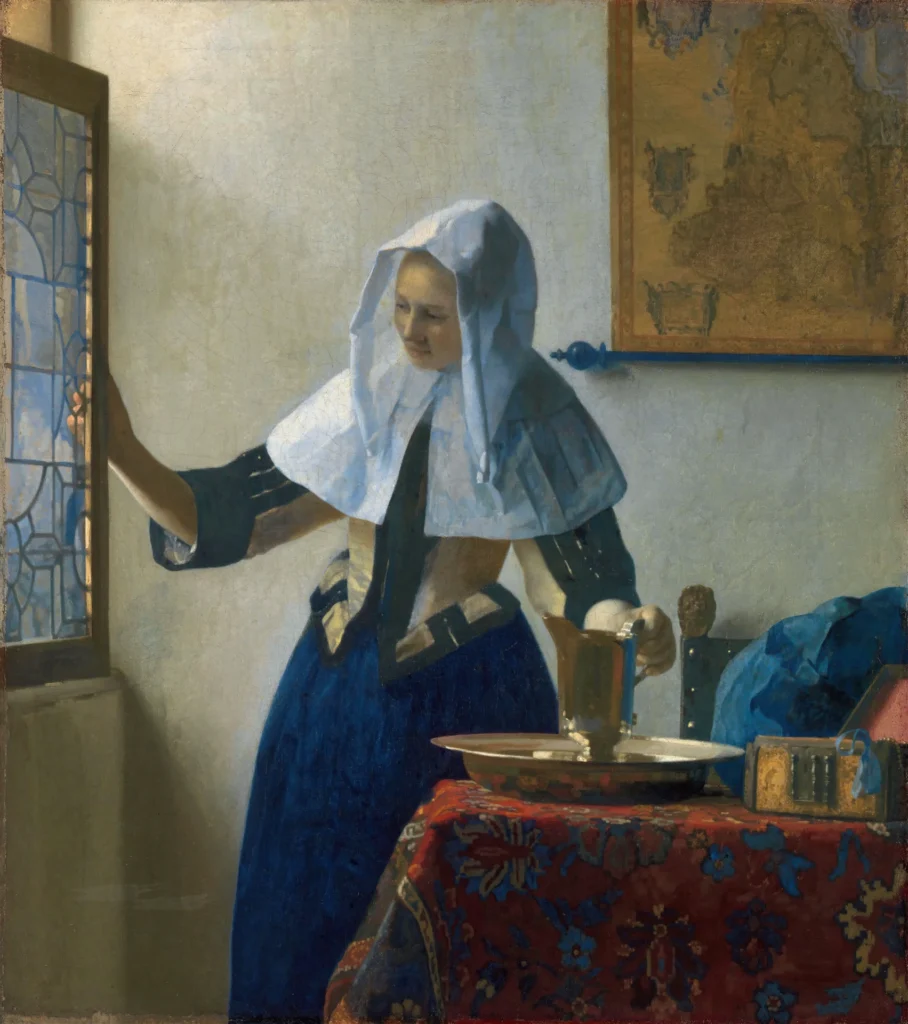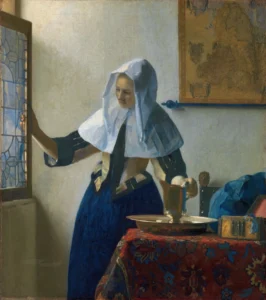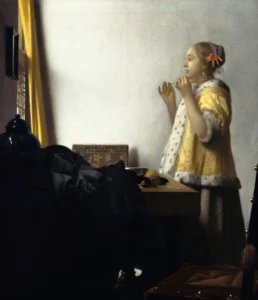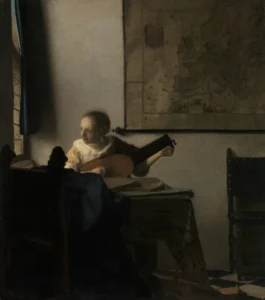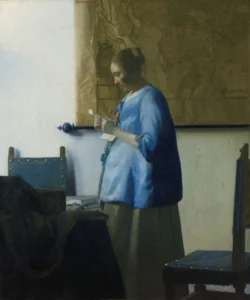Young Woman with a Water Pitcher (1662)
This exquisite painting showcases a young woman in a moment of tranquility, as she engages in a morning ritual at an open window. Dressed in a dark blue gown with a black and gold bodice, she holds a water pitcher gracefully, drawing viewers into her serene world. The artwork is rich in detail, featuring a vibrant red Asian rug and a map adorning the background wall, showcasing Vermeer’s impeccable technique in color and light—a hallmark of the Dutch Golden Age.
1660 - 1662
About the Artwork
Did You Know
Liked what you see? Add it to your collection.
Enjoyed reading? Share it.
... continued
Artist and Period
The painting is the work of Johannes Vermeer, a Dutch painter known for his captivating and intimate domestic scenes. It was created during the early to mid-1660s, a period when Vermeer was refining his unique style.
Composition and Details
The painting depicts a young woman standing at an open window, engaged in a quiet morning ritual. She is opening the window with her right hand while holding a water jug with her left hand, which rests on a larger platter on a table. The table is adorned with a predominantly red rug of Asian origin, and a chair with a blue material lies behind it. The woman wears a dark blue dress with a black and gold bodice and a white cloth as her headpiece. A map hangs on the wall in the background.
Style and Technique
Vermeer's work is characterized by his meticulous use of light and color. In this painting, he emphasizes the effects of light and its interaction with colors. For example, the blue drape is reflected as dark blue on the side of the metallic pitcher, and the red fabric modifies the gold hue of the basin's underside. The composition is controlled, yet it captures a spontaneous moment, reflecting Vermeer’s ability to balance geometric order with the play of light.
Symbolism and Themes
The painting embodies themes of domestic tranquility and purity, symbolized by the basin and pitcher. It also reflects the values of 17th-century Dutch culture, particularly the importance of possessions and the domestic life of the middle class. The scene is often interpreted as a glimpse into the private life of a woman before she presents her public face to the world.
Provenance
Young Woman with a Water Pitcher was purchased by Henry Gurdon Marquand in 1887 at a Paris gallery for $800. It was the first Vermeer painting to enter an American collection and was later donated by Marquand to the Metropolitan Museum of Art in New York City, where it remains on display.
Significance
This painting is one of Vermeer's most celebrated works and is noted for its poetic and intimate portrayal of everyday life. It highlights Vermeer’s skill in capturing the beauty of mundane tasks and the presence of the divine in the everyday, which continues to resonate with modern audiences.




